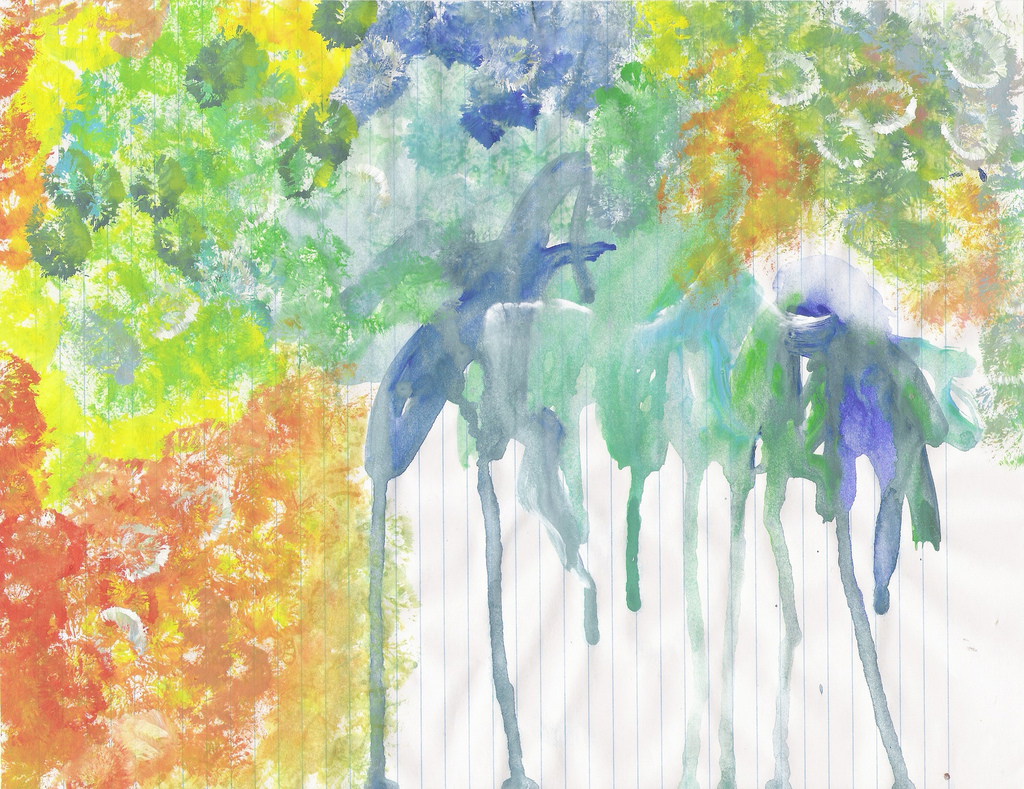
I had the rare pleasure of visiting three contemporary art spaces in three countries over three weeks in June: first Hobart’s MONA, then London’s Tate Modern, before spending a couple of days among the art installations at Blood Mountain in Budapest. Such an assault on the senses – the art and physical and cultural contexts for its display – has left the mind humming with ideas and questions. Indulge me…
1. What is the future of ‘hangable’ art?
That’s the kind you place in your dining room to set the mood, make a striking statement, record history. I mean, when we think Picasso, Renoir, Boyd, Nolan – any ‘master visual artists’ – we think of their work on canvas. So much contemporary art explores the medium or effects of scale as much as the message: video projection, sound and light effects, giant hyper-real sculptures of human beings. It’s thought-provoking, impressive, exciting, but you can’t take it home.
2. Who’s going to be taught in school?
Which contemporary artists are on their way to historical significance beyond kitch or quasi-kitch fame. A skull made out of diamonds, an island wrapped in plastic – attention grabbing yes, memorable through time… maybe… not. I can’t imagine the Year 10, History of Art textbook of future generations featuring a chapter on Christo. But why? It is, after all, art.
3. What happened to big philosophical ideas?
At the turn of the 20th century, philosophy was art. Nihilism, existentialism; facism, communism, socialism, capitalism. Many of the great philosophers, originators of philosophical theory, were also artists: brilliant authors like Sarte and Kafka. Freud’s work was being reinterpreted in the theatre. Post Wagner, German opera explored realism through productions such as Alban Berg’s Wozzeck. Like fireworks, visual art careered into the century at pace before splitting into movement after movement, so many based on philosophical thinking: dada, automatism, surrealism, cubism. Not all social philosophy brought happiness (it hadn’t in the Romantic era either!) but minds were at work on themes greater than the contemporary fixation: economics, ‘the production, distribution, and consumption of goods and services’. Is it any wonder we can’t get excited by the words our leaders speak unless they go for the pocket? We’ve been trained, fenced-in, too well.
4. Hang on, there is Walsh-ism!
Ok, so MONA is the most exciting public gallery I’ve been to. Ever. Compare the space (not the art) with the Tate, and there’s no competition. You can’t fail to be impressed by the dormant smoke stack towering over the Thames, but inside there’s the same old grubby white washed walls – too much space and, often, too little art to fill it. MONA has nothing to say by its façade, it’s the downward journey into the bowels of the Earth that surprises and excites, with every step. The i-Podesque ‘O’ device, the darkly lit spaces, and curtains: all turn standard art presentation on its head. The placement of Egyptian archaeological finds next to modern art is intriguing but doesn’t always gel in concept. There are no artworks that qualify for blockbuster status, so no competition with the NGV.
There is Walshism. David “just a privileged guy with a megaphone” Walsh, the professional gambler with millions to spend on the Apple Isle. When you consult your ‘O’ as you seek information on the art before you, there’s often an anecdote from David. The curator references David, in that admiring (enamoured?) tone in her voice recordings. You read about David’s vision in gallery material. You leave having made a firm acquaintance you never actually made. How much of this is authentic? You build your own gallery, your name pops up quite a bit. How much is about ego and attention? His writing screams look at me, brains and balls! How much is it just the media needing a new Australian iconoclast, a Richard Branson? Does it matter? There are people of all ages streaming in and out. The 25 year-old guy from whom I hired my car at the airport couldn’t gush enough. And believe me; he wasn’t of the chattering classes.
Walshism is about going it alone in a nation that has suffered a dearth of meaningful philosophical public debate since 1996 (or thereabouts). It’s a one man movement, it’s not offering anything particularly new in terms of artistic challenge, but it’s making people listen and think a bit more – about their physical, breathing, selves. You don’t think about carbon taxes when you are in MONA, and long after. And, for almost all of us, that’s a very, very good thing.

